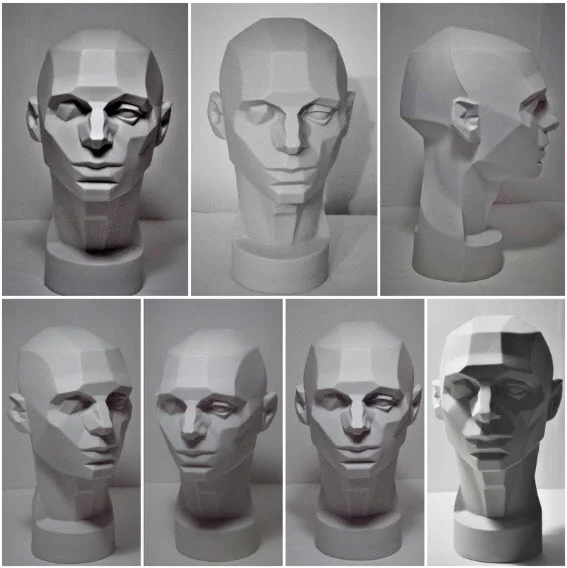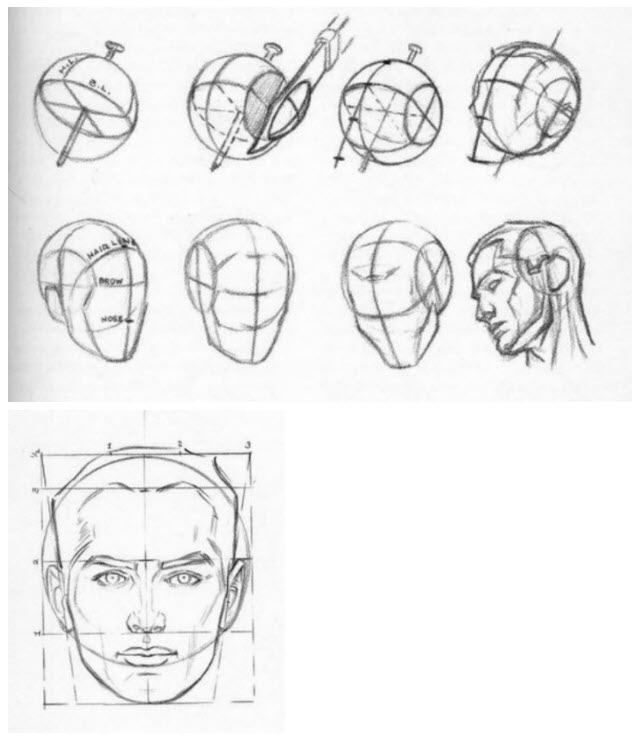Welcome to the final portion of Lesson 1!
Lesson 1.2
In our last lesson we talked about drawing edges instead of lines and the importance of training our eye to see relative size and proportions. We also touched on value scales and spoke about how to look at a sphere. If you missed it or need a refresher, click here to review.
If you’re ready to join the Portrait Prep Course go here now! We’re starting the course June 1, 2020.
This time we’ll begin by creating a few more shapes: first a triangle and a circle, then a cylinder to begin to see more depth.
We’ll use what we learned about a value scale to shade these objects and turn them into three-dimensional objects that can represent something in real life.
Triangles
Let’s start today with a triangle:
Draw your first vertical line….
...and then your horizontal line.
Be sure that your second line (which should be horizontal) is the same exact length as the vertical line. These equal lines should form a 90° angle.
You should be able to identify where the diagonal line ought to go.
You'll also start to notice the degree for the diagonal line. If your vertical and horizontal lines are 90° then your diagonal line should be around 45°.
If, however, the horizontal line is only half the width of your vertical line then your diagonal line will form a 30° angle. (See the examples below for a visual representation of what I mean.)
Create your own triangles and identify how the lines are related to one another!
Note: How does this relate to portraiture? Good question! Consider the diagram below. I've drawn the lines for the mask of the face, the curvature of the head, and the outlines we would use to develop the entire head. See the triangle? What we're doing with this exercise is learning how to think about our subject matter in a very three-dimensional way.
The line is from above the brow ridge to the ear hole (the external auditory meatus) next to the mastoid process.
Circles
Now let’s move on to a circle. Drawing a circle is actually not quite as difficult as you may think. If you think about having four equal sides and then curve lines in between these points you should be able to draw a circle that is adequate enough to represent something that is circular in your portrait drawings.
Look at my diagram below and see if you can draw your own circle using the same method.
Create four dots evenly spaced apart, then add curved lines to complete the circle.
Note: We will never escape the need to identify shapes in drawing portraits or anything that we draw. Seeing the shapes and being able to recognize the relationships between one edge and another edge, or from one object to another, is an integral part of being able to draw proportions correctly.
Cylinders
Finally, let’s add more visual interest by creating a cylinder.
Step 1
Create an ellipse: Draw two target dots the width you want the cylinder to be, then draw a curved line between them.
Then repeat in the opposite direction to create a mirror image of the first curve.
Step 3
Create the final curved line at the bottom. You should notice that it's parallel to the lower half of your ellipse at the top.
Step 4 - Optional Shading
You could shade in the cylinder at this point, but this is optional. The most important part of this exercise is to be able to see all of these lines in relationship to the whole object, and to create the curved lines to appear realistic and three dimensional.
Shading a Circle into a Sphere
Remember the discussion of light and shading with the Styrofoam ball in the last part of Lesson 1? We’re going to use those same concepts when we talk about shading a circle into a sphere. Don’t forget: we'll have a hard edge, a soft edge, a cast shadow, and a highlight.
Step 1
Loosely sketch a circle.
Create an imperfect circle to fill in with value. Don't worry that the circle may not represent a flawless ball shape--you can refine the edges of the circle to make it appear more round as you go.
Step 2
Keep adding value very lightly so that you ensure everything is in balance. As you progress, refine the shape of the circle to be more complete. You CAN do this!
Step 3
Determine the light source and begin diagramming.
Diagramming is simply a fancy term for labeling the elements of a drawing so you can think about the names of those elements in the drawing process. This is a fantastic way to learn the subtleties involved! Your mind will begin to identify these things as being different from the other elements in your drawing.
Follow this checklist to diagram your sphere:
Draw a light source icon
Label the highlight
Label the soft edge
Label the hard edge
Label the reflected light
Label the cast shadow








































